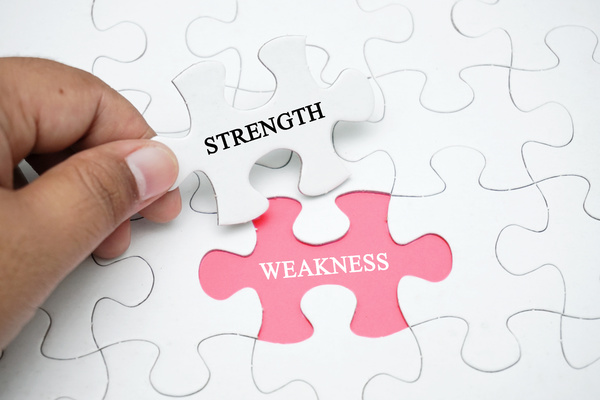THE WORLD’S #1 EXECUTIVE COACHING AND BUSINESS COACHING BLOG SINCE 2017.
How to Turn Leadership Weaknesses into Strengths
Published On: October 10, 2022 | Last updated on: March 12, 2025 | Author: John Mattone | Category: Blog, Intelligent Leadership
Leaders can view their weaknesses as liabilities they should avoid and ignore, or they can treat them as opportunities to improve themselves. Weaknesses tell us what we have to learn to get better. Through leadership coaching, it’s possible to turn weaknesses into strengths.
“When life gives you lemons, make lemonade!” – Popular wisdom.
As a leadership coach, I help people discover their strengths and weaknesses. I’ve created systems and tools leaders can use to uncover their leadership gaps and set up actionable plans to address them. Leaders who know and accept their strengths and weaknesses can improve themselves in two ways: by playing to their strengths and turning their weaknesses into strengths.
On the one hand, your weaknesses create challenges. They are there, hamstringing you and reminding you of your shortcomings as a leader. On the other hand, they give you opportunities to improve.
Your weaknesses may be opportunities in disguise.
Our Weaknesses Tell Us What We Have to Learn
You can treat your weaknesses as liabilities and allow them to frustrate you, or you can view them as opportunities like the setbacks that help you reach your goals. They tell you what you need to do differently. It all depends on your attitudes towards weakness and maturity.
It would not be far-fetched to think of a weakness as an engaged handbrake in a car. It also makes sense to view a strength as the gas pedal. If your goal is to move the vehicle forward, you can do it by focusing on your strengths and stepping on the gas. If you release the handbrake while pushing the pedal, however, you can send your car flying down the road.
Having your handbrake on gives you the opportunity to release it.
Discovering Your Weaknesses
Leadership coaching focuses on uncovering leadership gaps (a fancier name for weaknesses) alongside your strengths. Once you know your weaknesses, you know what you have to learn and where can improve, but to identify, experience, and accept your weaknesses, you must be mature and capable of humility.
Experiencing and accepting weaknesses is anything but a straightforward psychological process. Nature has programmed us all to avoid pain and unpleasant situations, and the pain of experiencing weakness is no exception.
Executive coaching professionals may maneuver their clients into situations where they must face and experience their weaknesses.
Doing Something About It
Some of us are mature and capable enough of experiencing and accepting our weaknesses. At this point, however, we may fall into the next trap. Getting stuck and re-living the pain our weaknesses cause is a real danger. It falls to business coaching to keep us safe from this pitfall and, after allowing us to taste defeat, it gives us actionable ways out of our predicaments.
Finding the Roots of the Problem
More often than not, our weaknesses stem from our beliefs. On one hand, this is bad news. Belonging to our innermost cores, beliefs are difficult to dissect, challenge, and overrule. Getting leaders to see their beliefs as nothing more than fallacious opinions is not easy. Skilled leadership coaches understand the best way to dig down and effect a change in beliefs is by asking subtle and relevant questions and co-discovering the root of the problem with the client.
Analyzing Weaknesses
Some of the weaknesses you perceive as such may be strengths that others dislike. Their feedback, opinions, and attitudes skew your perception and mislead you. Before you attempt to turn a weakness into strength, ensure it’s not a hidden strength.
Pulling Back the Veil
Once you understand your weaknesses inside-out (including their sources and the nature of their grip on your psyche), you demystify them and destroy their power.
Turn on the light and see your weaknesses for what they are.
Establishing Accountability and Shooting Down Excuses
The final blow to your weaknesses should be to dissect all the excuses that allow them to resurface. Shoot them all down and let critical thinking reign. Remember the pain your weaknesses can cause you and do whatever it takes to avoid that pain.
Pretending to have an imaginary boss to whom you report your progress to is one way to establish accountability. Leadership maturity gives you the emotional toolbox you need to handle your weaknesses, and leadership coaching can help you discover, analyze, and turn them into strengths.




